
|
JAPANESE PRINTS A MILLION QUESTIONS TWO MILLION MYSTERIES |
Ukiyo-e Prints浮世絵版画 |
|
Port Townsend, Washington |
|
A CLICKABLE INDEX/GLOSSARY (Hopefully this will be an ever changing and growing list.)
Bo THRU Da |
|
|
TERMS FOUND ON THIS PAGE: Bokashi, Bonbori, Bon no kubo, Botan, British Museum, Buckwheat flowers, Buddha's Birthday,Dominique Buisson, President Bush, Camel, Leslie Caron, Cha-soba, Chaya-zome Maurice Chevalier, Chihaya, Chikurin, Chirimen, Chōkei-sō, Chobunsai Eishi, Chō, Chōchin, Choki-bune, Choshi, Chronicle of the Battle of Ichinotani, Chrysanthemum (Kiku), Chuban, Chūshingura, Timothy Clark, Ronald Coleman, Dadaiko, Daikoku, Daikon, Daimyo, Dai-Nippon Rokujuyo-shu no Uchi, Daitoku-ji, Dango,
Dannoura no Tatakai
(The Battle of Dannoura), Danshichi Kurobei, Daruma, Date,
暈し, 雪洞, 盆の窪, 牡丹, 大英博物館, 単峰駱駝, 茶蕎麦, 茶屋染, 千早, 竹林, 縮緬, 蝶, 鳥文斉栄之, 提燈 / 提灯, 頂髻相, 猪牙船, 銚子, , 銚子, 菊, 中判, 忠臣蔵, 大太鼓, 大根, 大根紋, 大黒, 大名, 大日本六十余州内, 大徳寺, etc. |
|
|
TERM/NAME |
KANJI/KANA |
DESCRIPTION/ DEFINITION/ CATEGORY Click on the yellow numbers to go to linked pages. |
|
暈し ぼかし |
Shading or gradation (cf. ita-bokashi) |
|
|
Bonbori |
雪洞 ぼんぼり |
Paper covered lamp or lantern |
|
Bon no kubo |
盆の窪
ぼんのくぼ
|
Nape at the hollow of the neck: A baby's head was shaved, but if a small tuft of hair was left growing at the nape it too was known as bon no kubo.
To the left are two details from prints by Kunisada. Notice the subtle indications of the areas at the back of the the head at the nape where the hair has been allowed to grow.
|
|
Botan |
牡丹
ぼたん |
Tree peony motif: Dower refers to this plant as "the sovereign of the flowers". Previously I had read that it was "the king of flowers" and "the queen of flowers". Eventually I finally found an explanation for this gender confusion, but for the sake of me I can't remember where.
Brought to Japan from China it was valued for its beauty and medicinal properties. In time its use as a family crest "...ranked [it] almost as high as the chrysanthemum, paulownia and hollyhock in prestige."
Source: The Elements of Japanese Design by John Dower (p. 70) |
|
British Museum |
大英博物館 だいえいはくぶつかん |
Note that the British Museum is referred to as "daieihakubutsukan" in the kanji and kana to the left 1 |
|
Buckwheat flowers |
蕎麦
そば
|
Source for soba.
The dried seeds of the buckwheat plant or Fagopyrum esculentum are
the source of soba flour. Shirley Booth in her Food of Japan (pp.
106-107) notes that buckwheat is not a grain, but "...it is the seed of [an]
herbaceous plant... that is ground and used. Because buckwheat grows well in
cooler northern climes (buckwheat groats, called kasha, are a staple
in Russia), noodles made from buckwheat are a feature of the northern
prefectures of Japan such as Nagano and Niigata. They are also more popular
in the Tokyo area than wheat noodles (udon), which in turned are
favored by the people of the western Kansai region around Osaka. However,
when soba noodles are made with 100 percent buckwheat flour they tend
to break up easily, and, although extremely good for you due to the rutin in
buckwheat, they are somewhat heavy and dense. Pure buckwheat is also
expensive, so buckwheat flour is often mixed with a percentage of wheat
flour - usually in a ratio of 40-60 percent."
The images to the left and below are shown courtesy of Shu Suehiro at http://www.botanic.jp/index.htm. We would urge you to visit that valuable site.
|
|
Buddha's Birthday |
|
There are many mythic births. Literalists believe them to be true, but others see them as metaphorical or fanciful.
Athena was born fully grown and wearing a complete set of armor from the side of her father who was suffering from a headache. Eve was created from one of Adam's ribs. Whether this qualifies as a birth is not exactly clear, but that is basically incidental. Jesus was the result of a virgin birth which medieval Europeans believed to have been conceived aurally by the word of God delivered by the Holy Ghost. The historical Buddha's birthday does not vary greatly from these miracles. His mother stood and held the branch of a tree with her right hand and the Buddha came out of her side while she was in a state of bliss.
The date of the Buddha's birth varies from nation to nation for reasons of which I am ignorant. Generally it is linked to the 8th day of the 4th moon. In Japan it is celebrated today on April 8th by the hanamatsuri (花祭 or はなまつり) or flower festival. The commemoration is called hanakuyō (花供養 or はなくよう).
The image to the left is not a representation of the Buddha on his birthday, but it is fine example all the same. It represents the "....Daibutsu at the Todaiji at Nara, which comes from an ehon published in the 1690's entitled Todaiji butsuden engi by an artist of the school of Hambei." This was sent to us by our generous contributor E. Thanks E! |
|
Buisson, Dominique |
|
Author of The Art of Japanese Paper 1 |
|
Camel (One hump) |
単峰駱駝
たんぽうらくだ |
Anyone who has visited these pages knows that at times I am rather goofy. Camels don't count for a lot in Japanese prints, although they do appear at times, but if you would like to see a great print of one then click on the link to the right. 1 |
|
Cha-soba |
茶蕎麦 ちゃそば |
Soba made with green tea 1 |
|
Chaya-zome |
茶屋染 ちゃやぞめ |
A dyed fabric technique popular during the Edo period. |
|
Chihaya |
千早 ちはや |
The sacred white robes worn by Shinto shrine maidens or miko (御子 or みこ). |
|
Chikurin |
竹林 ちくりん |
A bamboo thicket. Often used as a decorative motif. It is also referred to as a takebayashi (たけばやし). |
|
Chirimen |
縮緬 ちりめん |
While this term can mean crepe in general terms it is also the term used for silk crepe. However, in this case it refers to a category of Japanese woodblock prints.
Literally it means "shrink (shrivel, shorten, condense, etc.) fine threads". 1 |
|
Chō |
蝶
ちょう
|
Butterfly: Sometimes I am surprised by a motif which I would think would be fraught with symbolism, but apparently has none or almost none. That seems to be true of the butterfly in Japanese art and literature. Unlike the peacock which may have no hidden meanings the butterfly at least has a modicum of them.
In China, according to C.A.S. Williams in his Chinese Symbolism and Art Motifs (pp. 51-2) the butterfly "...is an emblem of joy. It is a symbol of summer..." and a sign of conjugal felicity. "...in fact it might almost be called the Chinese Cupid." This belief it would appear has its origins in Taoism.
However, in Japan in the 7th century seems to have been a rather adverse reaction to Taoist beliefs. "Although numerous plants and animals are mentioned in the 8th-century poetry anthology Man'yōshū there is not a single reference to the butterfly. In an attempt to explain this some writers point out that in 644, according to the chronicle Nihon shoki (720), the government proscribed a popular variant of Taoism that venerated the larva of the swallowtail butterfly as a god."
Later in the Tale of Genji the butterfly was thought of as something "loveable." By the time of the Muromachi period (1333-1568) butterflies were appearing on armor and furniture.
Source and quote from: Kodansha Encyclopedia of Japan, vol. 1, p. 226, entry by Saitō Shōji.
Lea Baten in her volume Japanese Animal Art: Antique and Contemporary (p. 97) adds a little more information. "White butterflies are thought to be spirits of the living as well as the dead, and may not be captured - the fragile insect is a symbol of immortality, due to the successive stages of its metamorphose from egg to caterpillar and from cocoon to adult insect. Its graceful fluttering from flower to flower...is easily compared to the fickelness of women who often change lovers (in search of money.)
The images to the left are details from a print by Chikanobu while the ones above and below are by Kunisada.
|
|
Chobunsai Eishi |
鳥文斉栄之 ちょうぶんさい.えいし |
Artist 1756-1829 |
|
Chōchin |
提燈 / 提灯
ちょうちん
|
A lantern made of bamboo covered with paper or silk with a candle placed inside. It can be folded flat when not being used. Formerly they could be used like flashlights at night.
Two of three examples shown here represent various interpretations of the chōchin in print form from three different periods. The one at the top left is from a Kunisada print with a bijin balanced precariously on a railing while trying to hang a lantern (ca. 1840). The image in below that is by Hiroshi Yoshida showing the interior of a lantern maker's shop with several of these shown collapsed on the ground (1926). Hanging them stretches them out to the full form. The third example below is by Kiyochika and shows a cat which has caught a mouse by its tail as it is trying to escape through a lantern lying in its side. Notice the mouse's snout sticking out of the left side of the lantern (ca. 1880). My money is on the mouse.
|
|
Chōkei-sō |
頂髻相
ちょうけいそう |
The protuberance found at the top of the head of a Buddha. There are 32 different physical aspects of the Buddha of which the chōkei-sō is simply one.
To the untrained and especially typical Western eye the area at the top of the Buddha's head appears to be a simple hairstyle. However, it is anything but that. Years ago I was told by an expert in the field that when the Buddha attained enlightenment while meditating under the bodhi tree his brain expanded enormously and his skull had to expand to accommodate it. In Sanskrit it is referred to as the usnisa - pronounced usnisha.
The chōkei-sō is also known as the nikkei (肉髻 or にっけい).
For several days I was struggling to find the Japanese term for the usnisa. Then I heard from an old friend who is a scholar and Japanophile - Karen Mack. A few minutes late I had my answer.
Karen has lived in Japan for years and for some time has been offering a fascinating blog devoted to most things Japanese. I would urge you to take a look and bookmark it for future reference.
|
| Choki-bune |
猪牙船
ちょうきぶね |
A 'boar's tusk boat'. So named because of its shape. It was used to ferry passengers and goods.
The detail to the left is from a print by Hokusai. |
|
Choshi |
銚子
ちょうし |
Metal kettle used for warming and serving sake. |
|
"Chronicle of the Battle of Ichinotani" |
|
Kabuki play: Ichinotani futaba gunki 1 |
|
Chrysanthemum (Kiku), Chuban, Chūshingura, Timothy Clark, |
菊
きく |
One of the "Four Gentlemen" or Shikunshi which are flowers which mirror positive human traits. The other three are plum, orchid and bamboo. Borrowed from the Chinese and linked to confucian concepts. 1 |
|
Chuban |
中判 ちゅうばん |
Print size approximately 10 1/4" x 7 1/2" |
|
Chūshingura |
忠臣蔵 ちゅうしんぐら |
"The Treasury of the 47 Loyal Retainers" - probably the most popular tale adapted for both kabuki and bunraku. Often the subject of ukiyo artists. |
|
Clark, Timothy |
|
Author and scholar - curator in the Department of Japanese Antiquities at the British Museum 1 |
|
Dadaiko |
大太鼓
おおだいこ |
A large, elaborately decorated drum often with a surrounding flame-like frame. The ones with the flame motif are referred to as kaen dadaiko (火焔大鼓 or かえんおおだいこ). |
|
Daikon |
大根
だいこん
|
The Japanese radish or Raphanus sativus: According to Shu Suehiro at http://www.botanic.jp/index.htm this plant was native to Central Asia and coastal areas of the Mediterranean. It was cultivated in ancient Egypt and first appeared in Japan some time during the Jomon Era to Yayoi Era, i.e., from 10,000 to 2,500 years ago. The white to pale purple, 4 petaled flowers bloom in March and April. It is a member of the Brassiaceae or mustard family. in ancient times it was referred to as the suzushiro (すずしろ). (The photos of the plant itself are shown courtesy of Shu and we would encourage you to visit his wonderful site.)
Merrily Baird in her Symbols of Japan: Thematic Motifs in Art and Design (pp. 95-6) notes that the daikon "...is a dietary mainstay that enjoys a reputation for ensuring good health." In ca. 815 "...Heian court officials began to observe a pair of Chinese-inspired festivals known as the Medicinal Offerings and the Tooth Hardening (okusuri and hagatame)." Wine and special foods including radishes were offered to the Emperor at New Year's. The daikon was thought to harden the teeth and hence ensure good health. "A century later, the court began observing on the seventh day of the New Year Festival of Young Herbs. This involved the preparation of a gruel of seven auspicious plants, including the radish..."
During the Muromachi the daikon took on new significance: "...it symbolized beliefs, originally introduced by Tendai Buddhism in the ninth century, that even lowly forms of life such as vegetables could attain a state of Buddhahood" To the Zen sect it was linked to the simple, monastic life and was popularized through paintings.
In the Edo period the daikon came to be linked with Daikokuten, one of the Seven Propitious Gods. "Forked radishes in particular can also symbolize a female's wish for a child, and, in this context, they sometimes are donated to shrines."
[Note the dancing radish to the left. It is a detail from an early print by Kunisada where a seated male figure is sternly considering this life sized taproot. Is the radish dancing gleefully because it has attained enlightenment a la the Tendai sect? Is is meant to represent a woman's desire for child? Or, could it be something else? Personally, I haven't the slightest.] |
|
Daikon mon |
大根紋 だいこんもん |
Japanese radish crests: According to John W. Dower in his The Elements of Japanese Design (pp. 76-77) the radish is "One of the seven plants of spring,"...[and it has] numerous superstitious and religious connotations."
He continues: "In ancient religious ceremonies it was associated with parsley and shepherd's purse as a particularly auspicious food for certain occasions. In esoteric Buddhism, a forked radish was the symbol of Shoten (Vinayaksha), the elephant-headed god, and this obvious fertility symbolism came to bode prosperity and success."
|
|
Daikoku |
大黒
だいこく |
One of the Seven Propitious Gods. He is the god of wealth and harvest and can often be identified by his large sack of treasures and his wooden mallet. |
|
Daimyo |
大名 だいみょう |
A feudal lord 1 |
|
Dai-Nippon Rokujuyo-shu no Uchi |
大日本六十余州内 だいにっぽん.ろくじゅうよしゅう. の.うち |
A series of prints by Kuniyoshi: "Sixty Odd Provinces of Japan - Dramatic Chapters" 1 |
|
Daitoku-ji |
大徳寺 だいとくじ |
Buddhist temple of the Rinzai Zen sect in Kyoto 1 |
|
Dango |
団子
だんご |
Dumpling motif: At first glance the use of the sweet dumpling would seem to be a rather odd choice for a family crest or mon - especially for a warrior clan. However, John W. Dower notes that its origin has a rather gruesome source. Supposedly "...Oda Nobunaga [織田信長 or おだのぶなが - 1534-82], Japan's great sixteenth-century unifier...wished to see the severed heads of his enemies skewered like dumplings on a spit."
Quote from: The Elements of Japanese Design, by John W. Dower, p. 110. |
|
Dannoura no Tatakai (The Battle of Dannoura) |
壇ノ浦の戦 だんのうら.の.たたかい |
This is the battle on April 25, 1185 which put the final nail in the coffin of Taira hegemony. 1 |
|
Danshichi Kurobei |
団七力郎兵衛 だんしち.くろべえ |
Kabuki role of a man who slays his obnoxious father-in-law |
|
Daruma |
達磨
だるま |
Daruma is the Japanese name for Bodhidharma who was the founder of what became known as Zen in Japan. 1
|
|
The word 'Daruma', for whatever reason, became a slang term for prostitute. According to one source there was a famous, beautiful courtesan in the late 1600s who laughed when she heard the story of Daruma sitting staring at a wall for nine years. She said basically "That's not such a big deal. Prostitutes have to spend every day and every night sitting and looking for customers - not facing a wall but facting the street through the windows. After ten years in this world of misery, I have already exceeded Daruma by one year."
Supposedly when the artist Hanabusa Itchō (英一蝶 or はなぶさいちょう: 1652-1724) heard this anecdote he painted the first onna Daruma as a prostitute.
Sometimes Daruma is joined by one or more beautiful women. The conclusion: Even the most stolid, i.e, transcendental, male cannot avoid the lure of feminine wiles.
There are even cases where Daruma is shown dressed in drag. The reason? Got me. It must have amused someone. (See our entry for mitate. This might clear things up a bit - but don't count on it.)
Source and quotes: Daruma: The Founder of Zen in Japanese Art and Popular Culture, by H. Neill McFarland, Kodansha International, 1987, pp. 82-86. |
||
|
|
||
|
Date |
伊 だて |
A clan of the Sendai in Ôshû 1 |
|
Date kurabe okuni kabuki |
伊達競阿國劇場 |
|
|
Datsue-ba |
奪衣婆
だつえば |
The Old Hag of Hell who gathers the clothing of the damned before they cross over to Hell. 1 |
|
Dayflower (Tsuyukusa) |
露草
つゆくさ |
Source of aigami, an early organic blue colorant which fades easily. 1 |
|
Years ago I moved into a run down house in Kansas. The front yard was covered with tiny blue flowers amid rich green leaves. I thought these beautiful, but my new neighbor to the east informed me that these were nothing more than pernicious weeds. I liked them anyway and remember crushing some of the petals between my fingers. It made a slight blue color which was easily washed off. This was the dayflower or spiderwort. (Dayflowers are members of the spiderwort family.) I had no idea at the time that the dayflower in my front yard was the same source as onr of the washed out colors I was looking at in late 18th century Japanese prints.
I didn't think about these flowers much - it has been about twenty years since I lived there - until recently when I was reading about Japanese kimonos and the yūzen technique in particular. Yūzen (友禅 or ゆうぜん) is a type of fabric design created with a rice paste resist method of painting or dyeing.
The dayflower's dyes are impermanent and hence are referred to as 'fugitive'. Extremely fugitive would be more accurate. They fade when exposed to light - maybe even when they aren't. They can be washed out fairly easily too. That is why they are used by yūzen masters in creating the designs for their fabrics.
Originally a length of silk would be stretched taut and then a light blue design outline would be painted in freehand with aobana (青花 or あおばな) which is the dye made from the dayflower. [It is referred to as aigami (藍紙 or あいがみ) when used as a dye on early ukiyo-e.] Outside of the pale blue line a thin rice paste resist line was then added. According to one web site a diluted liquid from beans can be washed onto the back of the cloth to remove the aobana lines. Other than that it would disappear with an extended steaming process which would remove the rice paste and set the painted colors.
According to Amanda Mayer Stinchecum in Kosode: 16th-19th Century Textiles from the Nomura Collection (published by the Japan Society and Kodansha International, 1984, pp. 202-3) "Juice of the petals contains delphinidin and can be extracted with the morning dew in May and June." In the Nara period [710 to 794 A.D.] fabrics were rubbed with the petals. "During Edo [1615 to 1868 A.D.], liquid used to outline yūzen designs for dyeing, outline washed out after dyeing." |
||
|
|
A thru Ankō |
|
|
Aoi thru Bl |
De thru Gen |
Ges thru Hic |
Hil thru Hor |
Hos thru I |
|
J thru Kakure-gasa |
Kakure-mino thru Ken'yakurei |
|
Kesa thru Kodansha |
|
Kōgai thru Kuruma |
Kutsuwa thru Mok |
Mom thru N |
O thru Ri |
Ro thru Seigle |
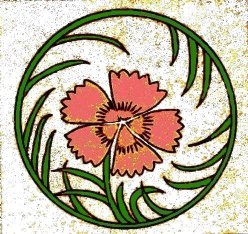 Sekichiku thru Sh |
|
Si thru Tengai |
|
Tengu thru Tsuzumi |
|
Yakusha thru Z |
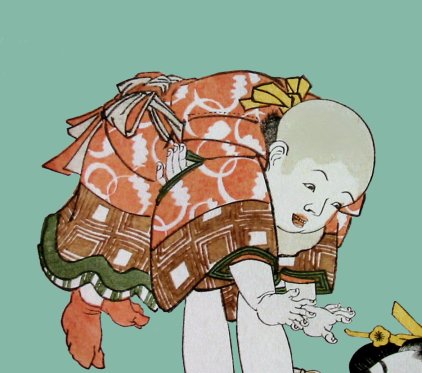
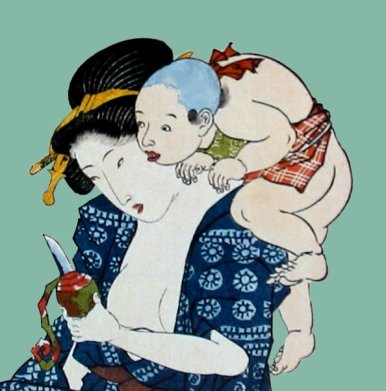
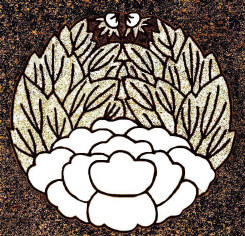
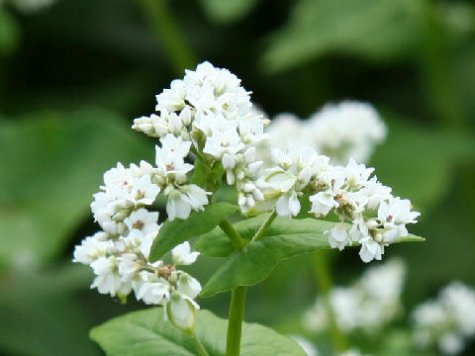
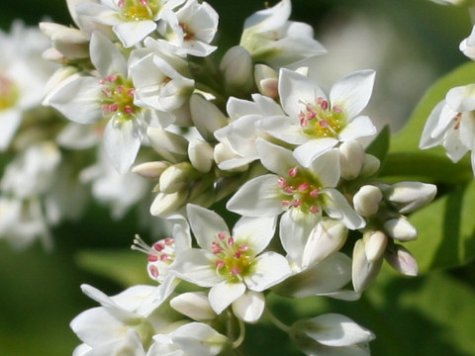
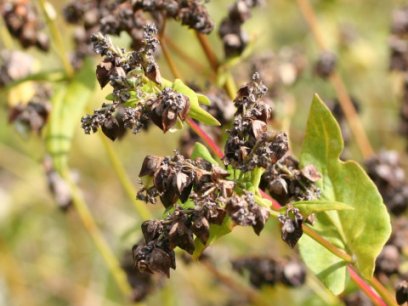
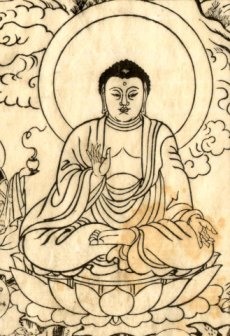
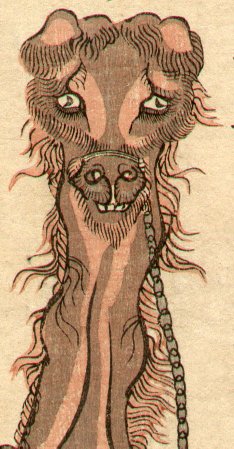
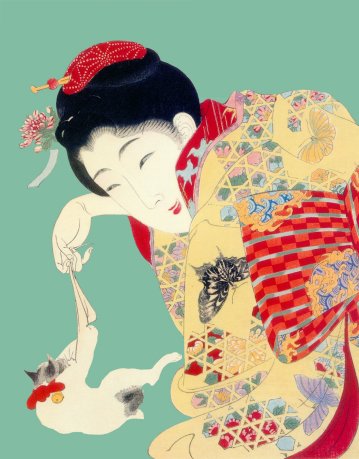
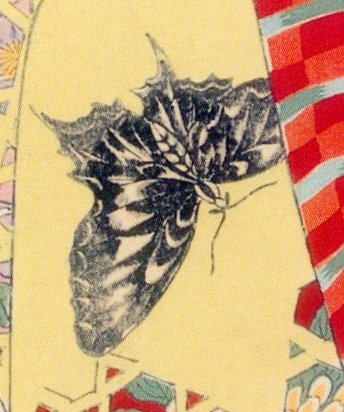
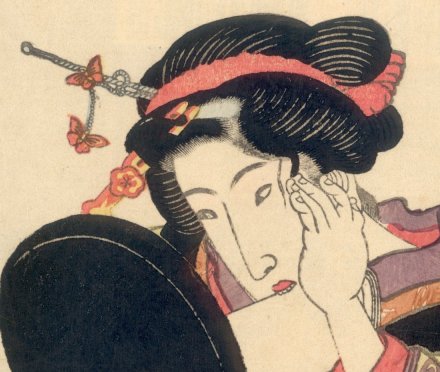
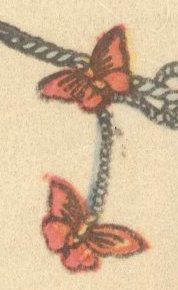
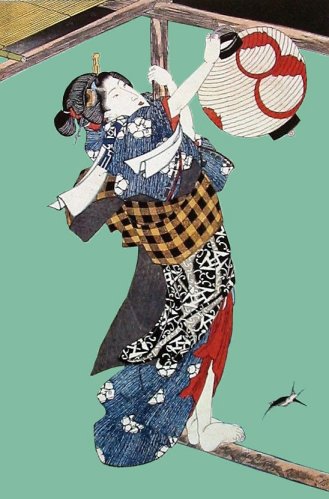
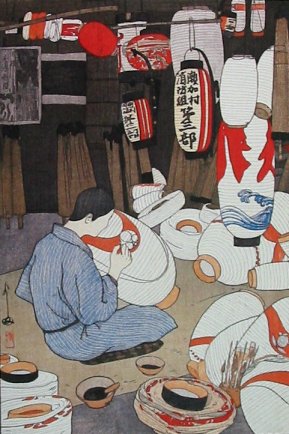
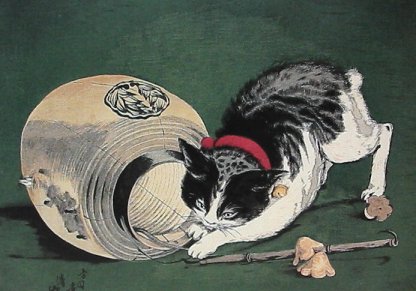
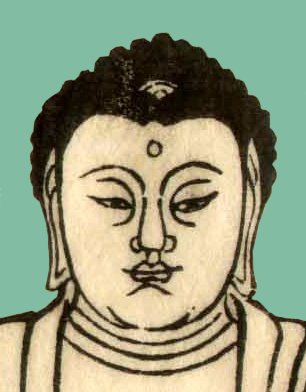
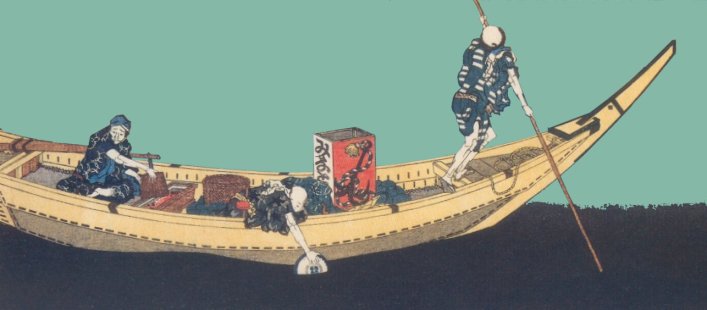
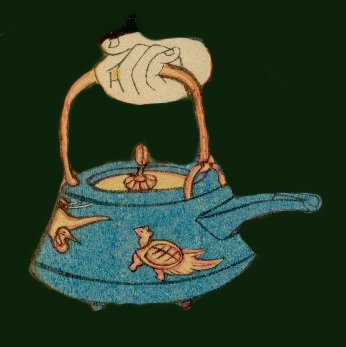
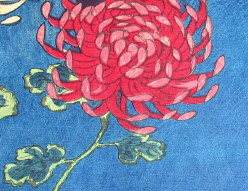

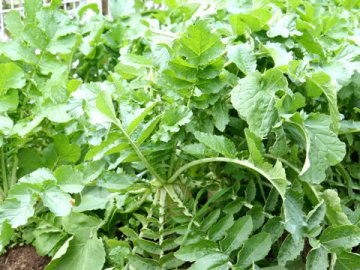
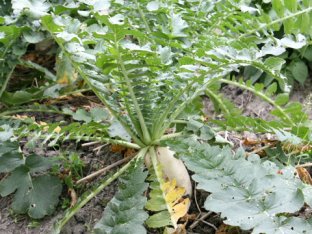
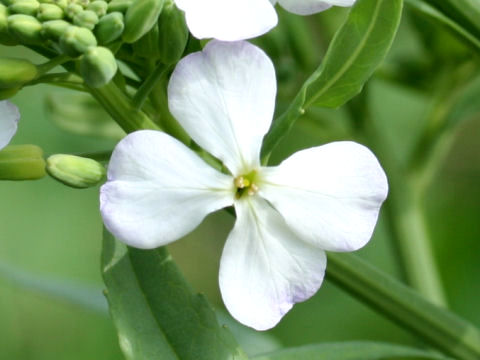
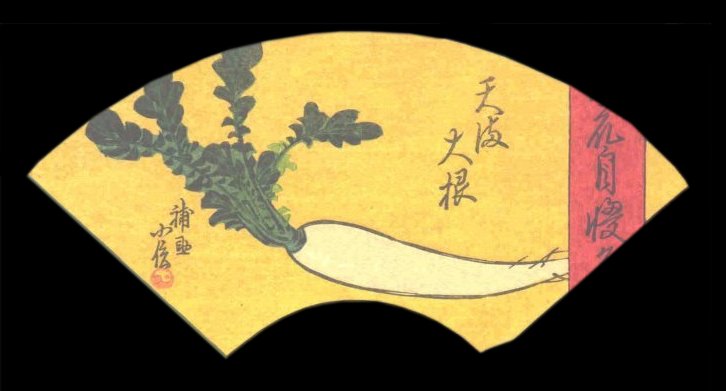
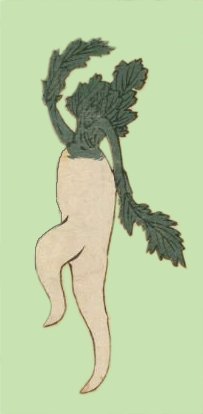
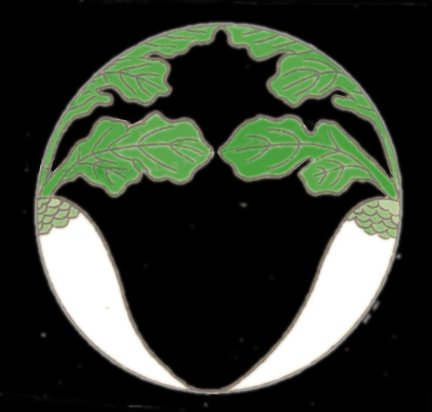
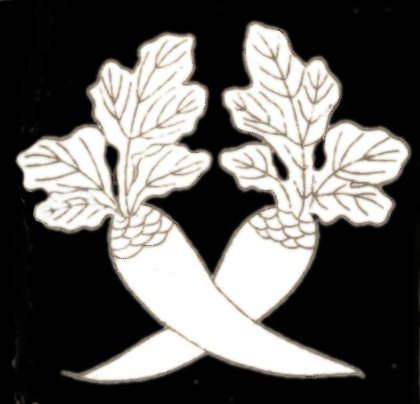
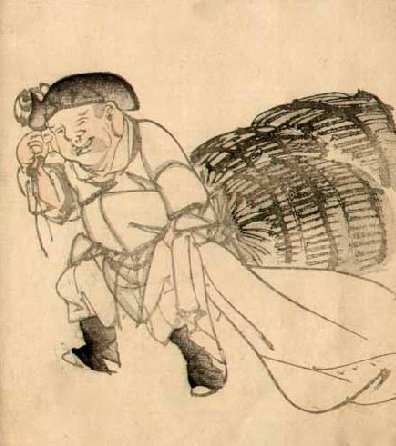
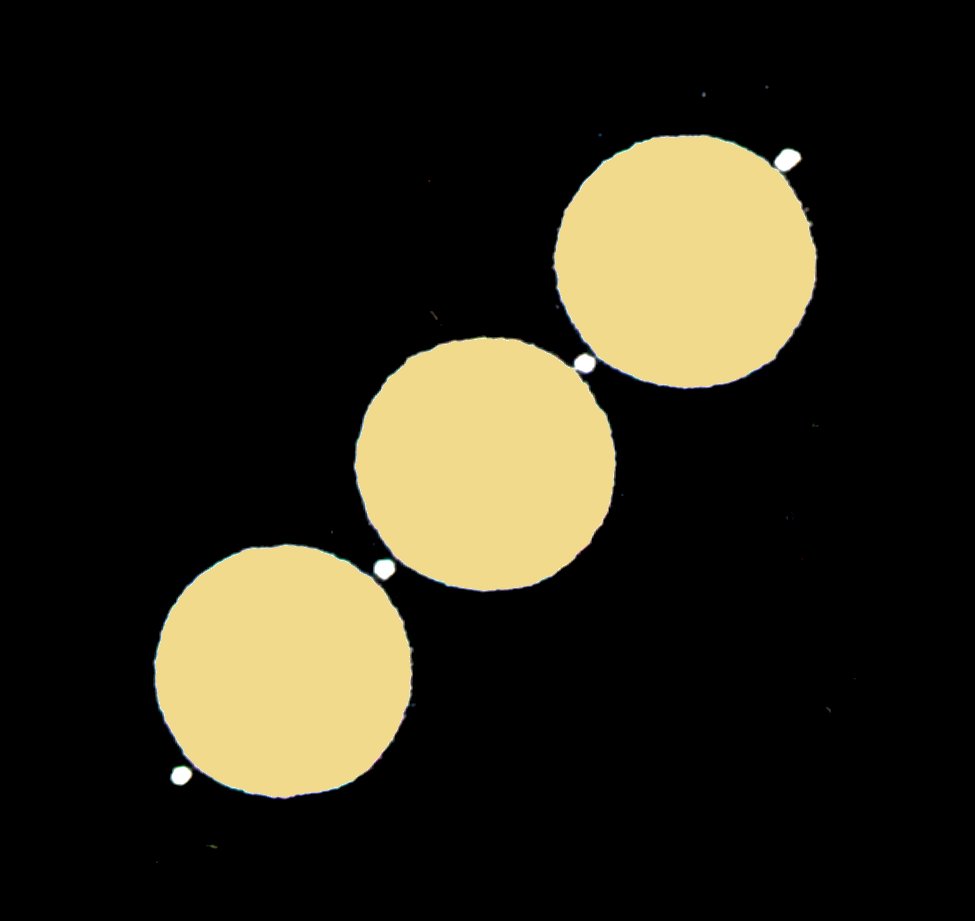
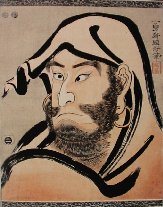
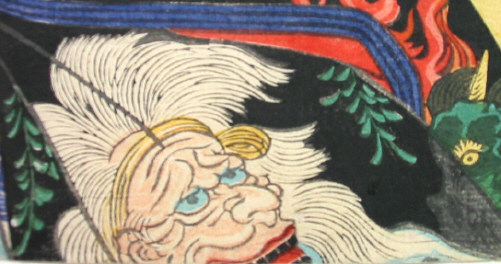

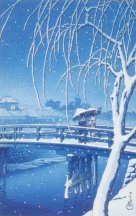
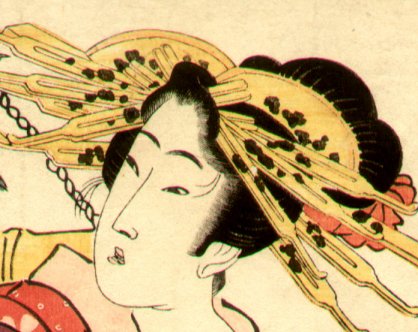

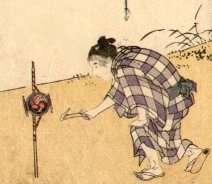
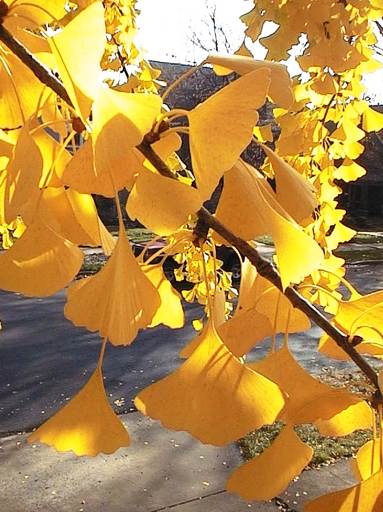
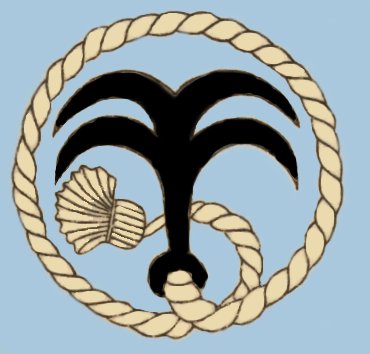
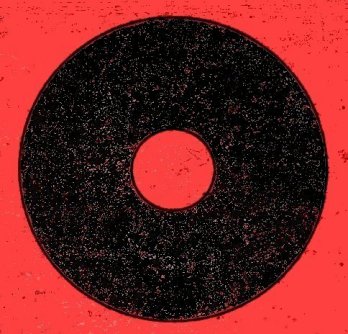
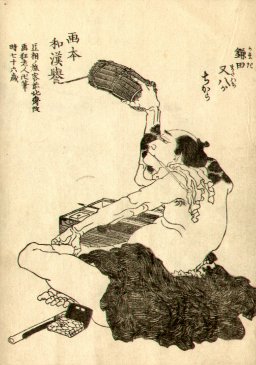
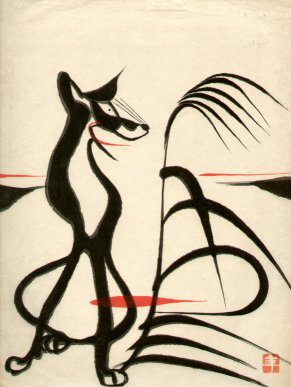
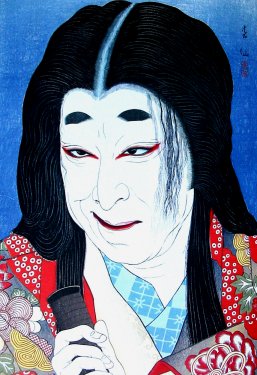
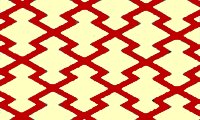
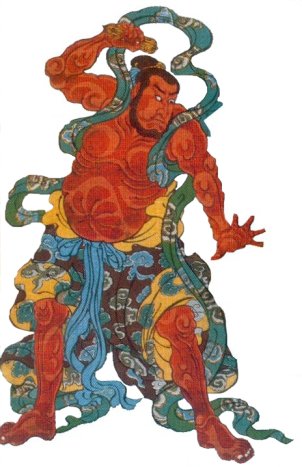
3.jpg)
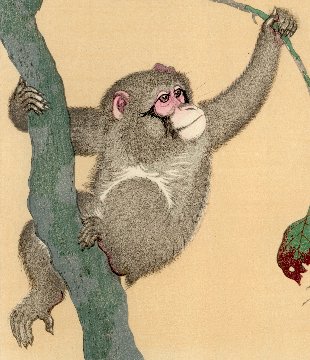
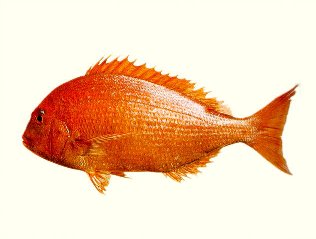
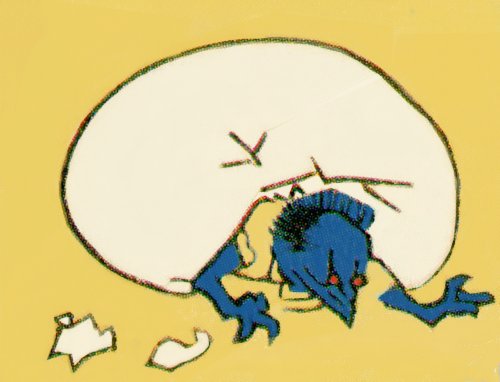
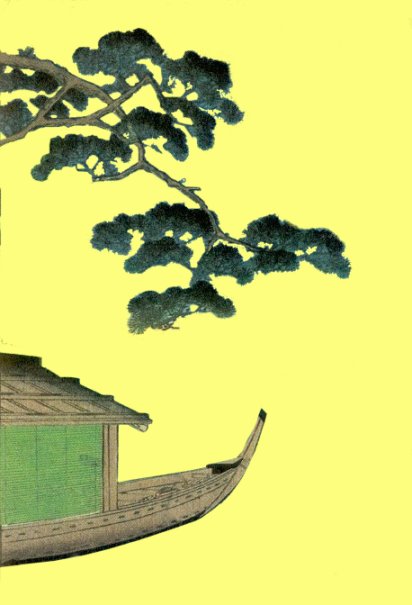
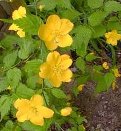
 HOME
HOME